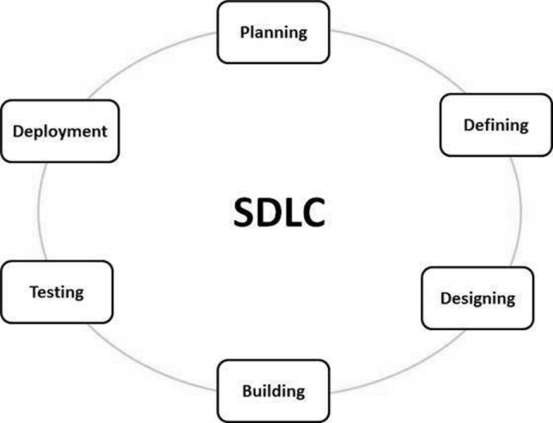What Does High Cycle in Airsoft Mean
What Does High Cycle in Airsoft Mean
SDLC - Overview
Software Development Life Bike (SDLC) is a process used by the software industry to design, develop and test high quality softwares. The SDLC aims to produce a high-quality software that meets or exceeds customer expectations, reaches completion inside times and price estimates.
-
SDLC is the acronym of Software Evolution Life Cycle.
-
Information technology is as well chosen as Software Evolution Procedure.
-
SDLC is a framework defining tasks performed at each footstep in the software development process.
-
ISO/IEC 12207 is an international standard for software life-wheel processes. It aims to be the standard that defines all the tasks required for developing and maintaining software.
What is SDLC?
SDLC is a procedure followed for a software project, within a software organisation. It consists of a detailed plan describing how to develop, maintain, replace and alter or raise specific software. The life bicycle defines a methodology for improving the quality of software and the overall development procedure.
The following figure is a graphical representation of the various stages of a typical SDLC.

A typical Software Evolution Life Cycle consists of the following stages −
Stage one: Planning and Requirement Assay
Requirement analysis is the near important and fundamental stage in SDLC. Information technology is performed by the senior members of the squad with inputs from the client, the sales department, marketplace surveys and domain experts in the manufacture. This information is so used to plan the basic project approach and to conduct product feasibility study in the economical, operational and technical areas.
Planning for the quality assurance requirements and identification of the risks associated with the project is also done in the planning stage. The outcome of the technical feasibility study is to ascertain the diverse technical approaches that tin be followed to implement the projection successfully with minimum risks.
Stage 2: Defining Requirements
One time the requirement analysis is done the next pace is to conspicuously define and document the product requirements and become them canonical from the customer or the marketplace analysts. This is done through an SRS (Software Requirement Specification) document which consists of all the product requirements to be designed and developed during the projection life cycle.
Stage iii: Designing the Production Compages
SRS is the reference for product architects to come out with the all-time architecture for the product to be developed. Based on the requirements specified in SRS, usually more than one design approach for the product architecture is proposed and documented in a DDS - Design Certificate Specification.
This DDS is reviewed by all the important stakeholders and based on various parameters as take chances cess, product robustness, design modularity, upkeep and fourth dimension constraints, the best blueprint arroyo is selected for the product.
A design approach clearly defines all the architectural modules of the product along with its communication and data flow representation with the external and third political party modules (if whatsoever). The internal pattern of all the modules of the proposed architecture should exist clearly defined with the minutest of the details in DDS.
Stage 4: Edifice or Developing the Production
In this stage of SDLC the actual development starts and the production is congenital. The programming lawmaking is generated equally per DDS during this phase. If the design is performed in a detailed and organized way, code generation can be accomplished without much hassle.
Developers must follow the coding guidelines defined by their organization and programming tools like compilers, interpreters, debuggers, etc. are used to generate the code. Different high level programming languages such as C, C++, Pascal, Java and PHP are used for coding. The programming language is chosen with respect to the type of software being adult.
Stage 5: Testing the Product
This phase is usually a subset of all the stages as in the modernistic SDLC models, the testing activities are mostly involved in all the stages of SDLC. Even so, this phase refers to the testing only stage of the product where product defects are reported, tracked, fixed and retested, until the product reaches the quality standards divers in the SRS.
Stage half dozen: Deployment in the Market and Maintenance
In one case the production is tested and ready to be deployed it is released formally in the appropriate market. Sometimes product deployment happens in stages as per the business organisation strategy of that organization. The production may get-go exist released in a limited segment and tested in the real business concern environment (UAT- User credence testing).
So based on the feedback, the product may be released as it is or with suggested enhancements in the targeting market segment. After the production is released in the market, its maintenance is done for the existing customer base.
SDLC Models
There are various software evolution life cycle models defined and designed which are followed during the software development process. These models are too referred as Software Evolution Procedure Models". Each procedure model follows a Series of steps unique to its blazon to ensure success in the procedure of software development.
Following are the nearly important and popular SDLC models followed in the industry −
- Waterfall Model
- Iterative Model
- Spiral Model
- Five-Model
- Big Bang Model
Other related methodologies are Agile Model, RAD Model, Rapid Awarding Development and Prototyping Models.
Useful Video Courses

Video

Video

Video
What Does High Cycle in Airsoft Mean
Posted by: canterthicho.blogspot.com
Belum ada Komentar untuk "What Does High Cycle in Airsoft Mean"
Posting Komentar